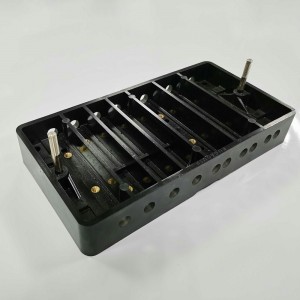Phenolic plastic, commonly known as bakelite powder, was invented in 1872 and put into industrial production in 1909. It is the oldest plastic in the world, the general name of plastics based on phenolic resin, and one of the most important thermosetting plastics. Generally, it can be divided into non laminated phenolic plastics and laminated phenolic plastics. Non laminated phenolic plastics can be divided into cast phenolic plastics and pressed phenolic plastics. Widely used as electrical insulation materials, furniture parts, daily necessities, handicrafts, such as rice cooker shell, bakelite handle, switch accessories, etc. In addition, there are asbestos phenolic plastics mainly used for acid resistance, adhesive coated paper and cloth for insulation, phenolic foam plastics and honeycomb plastics for thermal insulation and sound insulation, etc.
Phenolic laminated plastic is made of sheet filler impregnated with phenolic resin solution, which can be made into various profiles and plates. According to the different fillers used, there are paper, cloth, wood, asbestos, glass cloth and other laminated plastics. Cloth and glass cloth phenolic laminated plastics have excellent mechanical properties, oil resistance and certain dielectric properties. They are used to manufacture gears, bearing shells, guide wheels, silent gears, bearings, electrical structural materials and electrical insulation materials. Wood laminated plastics are suitable for bearings and gears under water lubrication and cooling. Asbestos cloth laminated plastic is mainly used for parts working under high temperature.
Phenolic fiber shaped compression plastic can be heated and molded into various complex mechanical and electrical parts, with excellent electrical insulation, heat resistance, water resistance and wear resistance. It can make various coil racks,terminal box, electric tool housings, fan leaves, acid resistant pump impellers, gears, cams, etc.

Post time: Jun-28-2022

